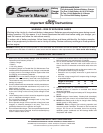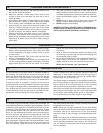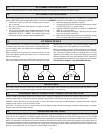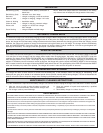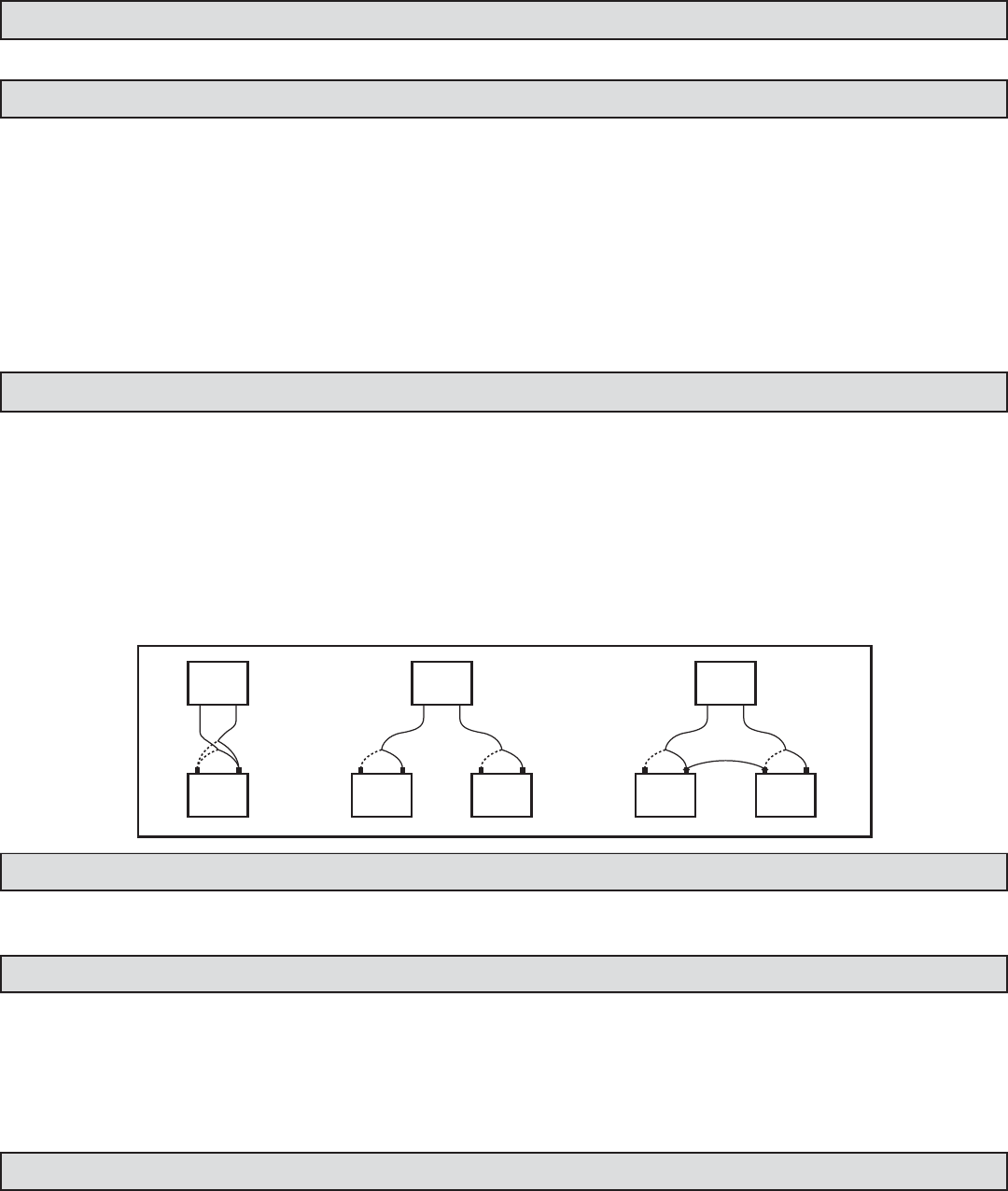
3
G. DC CONNECTION PROCEDURE
When charging battery(ies) in boat, take care to determine the battery type and which pole is ground. To reduce risk of a spark near
battery, follow these general steps when battery is inside boat. WARNING: A spark near the battery may cause battery explosion.
1. Position AC power cord and DC charging cords to reduce
risk of damage.
2. Stay clear of fan blades, belts, pulleys, and other parts that
can cause injury.
3. Check polarity of battery posts. Battery case will be marked
to indicate each post’s polarity: POSITIVE (POS, P, +) and
NEGATIVE (NEG, N, -). NOTE: The positive battery post
usually has a larger diameter than the negative post.
4. Determine which post of battery is ground.
5. Connect POSITIVE (RED) ring terminal from battery charger
to POSITIVE (POS, P, +) post of battery.
6. Connect NEGATIVE (BLACK) ring terminal to NEGATIVE
(NEG, N, -) post of battery
7. When disconnecting the charger, disconnect the AC power
cord from the electric outlet first.
8. While disconnecting output leads from the batteries, always
do so in reverse order of the connection procedure.
H. DC WIRING DETAILS
When connecting the ring terminals to the battery, remove nuts
on battery posts, place the ring terminal on corresponding posi-
tive and negative post, and replace each nut tightly to ensure a
good connection.
When connecting the ring terminals, connect the black 12 volt
lead to the negative battery post and the red 12 volt lead to the
positive battery post.
When connecting the charger to ONE battery at the 20A charge
rate, connect both positive leads from each charging bank to the
positive post of the battery. Connect both negative leads from
each charging bank to the negative post of the battery.
When connecting the charger to TWO batteries, connect the posi-
tive lead from charging bank one to the positive post of battery
one. Connect the negative lead from charging bank one to the
negative post of battery one. Connect the leads from charging
bank two to battery two in the same fashion. NOTE:
Removal of
a strap between two batteries in a 24V system is not necessary.
FOR DETAILED WIRING – SEE DIAGRAMS BELOW
12V
20A
COMBINED
12V
+
–
+
–
12V
+
–
12V
+
–
12V
+
–
12V
12V
10A
EACH
24V
10A
EACH
STRAP
NOT
INCLUDED
I. INLINE FUSES
Inline fuses, located close to the ends of the red leads, protect the charger from extremely high voltage surges, lightning strikes or other
high current surges. If a fuse blows, replace only with AGC-30 30A 32V 1 ¼” glass fuse.
J. GROUNDING AND AC POWER CORD CONNECTION INSTRUCTIONS
Charger should be grounded to reduce risk of electric shock. Charger is equipped with an electric cord having a grounding plug. The plug
must be plugged into an outlet that is properly installed and grounded in accordance with all local codes and ordinances.
DANGER – Never alter AC cord or plug provided – if it will not fit outlet, have proper outlet installed by a qualified electrician. Improper
connection can result in a risk of an electric shock.
CAUTION – To reduce risk of fire or electric shock, connect battery charger directly to grounding receptacle (three-prong). An adapter
should not be used with battery charger.
K. OPERATING INSTRUCTIONS
Once the unit has been properly connected to the battery(ies), plug in the charger to AC power. Initially all 4 LEDs on both charging
banks will turn on in sequence. The battery charger will perform a self test and light the two yellow LEDs in sequence next. The charger
will then go into a battery diagnostic mode to determine if the battery(ies) are independent or connected in series (24V) or parallel (12V).
NOTE:
It is important to not operate any electrical devices on the boat during the first 30 seconds after plugging in the charger while it is
diagnosing the battery(ies).
Once the diagnostics are complete, the charger will begin charging the battery(ies) if needed. Each bank has
an independent display of LEDs and will show the charge status of the battery. NOTE:
When both output leads are connected to one
battery, only charging bank one will display the charge status of the battery.
F. DC CONNECTION PRECAUTION
Connect and disconnect the DC output connections only after removing the AC cord from the electric outlet.



